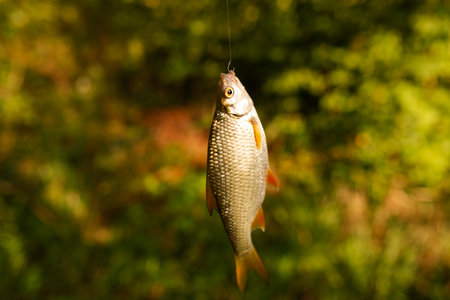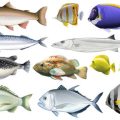Introduction to the British Fishing Industry and Current Challenges
The British fishing industry has long been woven into the fabric of the nation’s coastal communities, shaping local culture, livelihoods, and the country’s culinary traditions. From bustling harbours in Cornwall to the iconic trawlers of Grimsby and Aberdeen, fishing remains a symbol of British resilience and ingenuity. Historically, UK fisheries have contributed significantly to both the national economy and food security. According to government data, the sector supports over 12,000 jobs directly at sea and tens of thousands more in processing, logistics, and retail.
Historical Significance and Economic Impact
| Aspect | Details |
|---|---|
| Cultural Heritage | Centuries-old traditions in regions such as Scotland, Cornwall, and Northern Ireland. |
| Economic Contribution | £987 million in fish landed (2022), with exports valued at approximately £1.6 billion. |
| Employment | Directly employs over 12,000 fishers; indirect jobs exceed 24,000. |
| Key Ports | Plymouth, Peterhead, Brixham, Grimsby. |
Present-Day Issues Facing the Sector
The industry is currently navigating a period of unprecedented change. Brexit has redefined access to traditional fishing grounds and trade arrangements with European partners. Furthermore, UK fisheries are grappling with sustainability challenges, including declining fish stocks due to overfishing and environmental pressures. Another pressing concern is the rising threat posed by invasive species—non-native organisms that disrupt marine ecosystems and outcompete native fish populations.
Main Challenges Affecting British Fishing Today
- Trade barriers and export delays post-Brexit
- Quota restrictions impacting small-scale operators
- Depletion of certain key fish stocks (e.g., cod)
- Invasive species threatening biodiversity and commercial yields
- Climate change altering marine habitats around the British Isles
A Critical Juncture for Policy and Research
In light of these complex issues, there is an urgent need for forward-thinking policy proposals grounded in robust scientific research. Innovative management strategies—particularly concerning invasive species—will be essential for safeguarding the future prosperity of British fisheries while ensuring ecological balance in UK waters.
2. Existing Policies and Regulatory Frameworks
The landscape of fisheries management in the United Kingdom has undergone substantial transformation in recent years, particularly in the wake of Brexit. The regulatory framework is shaped not only by UK-wide policies but also by devolved administrations in Scotland, Wales, and Northern Ireland, each wielding significant autonomy over their respective marine environments.
Overview of Current UK and Devolved Fisheries Policies
The principal legislative instrument guiding British fishing is the Fisheries Act 2020, which establishes a new legal foundation for sustainable fisheries outside the auspices of the EUs Common Fisheries Policy (CFP). This Act empowers each devolved government to develop tailored management plans while ensuring adherence to overarching sustainability objectives. The table below provides a comparative summary:
| Nation/Region | Main Policy Instrument | Key Features |
|---|---|---|
| UK-Wide | Fisheries Act 2020 | Sustainability principles, quota allocation, ecosystem-based management |
| Scotland | Scottish National Marine Plan & Inshore Fisheries Strategy | Enhanced local control, spatial planning, community quotas |
| Wales | Welsh National Marine Plan | Ecosystem approach, stakeholder engagement, coastal protection |
| Northern Ireland | Marine Act (Northern Ireland) 2013 & Fisheries Bill NI | Cross-border cooperation, habitat restoration, science-led policy |
Brexit Implications for Fisheries Regulation
The UKs departure from the European Union has heralded both challenges and opportunities for its fisheries sector. The shift away from the CFP allows for greater national control over waters and resource allocation. However, new trade arrangements and access agreements have required careful negotiation with neighbouring countries. Notably, the UK-EU Trade and Cooperation Agreement (TCA) introduced transitional arrangements on quota shares and access rights, requiring ongoing annual negotiations.
Key Impacts of Brexit on UK Fishing Policy:
- Quota Adjustments: Reallocation of fishing rights in favour of UK fleets.
- Market Access: New export procedures for seafood products entering the EU market.
- Regulatory Divergence: Potential to tailor rules to local ecological and economic needs.
- International Diplomacy: Increased need for bilateral agreements with neighbouring states.
Compliance with International Agreements
The UKs commitment to international marine conservation standards remains robust post-Brexit. The nation upholds obligations under global accords such as the United Nations Convention on the Law of the Sea (UNCLOS) and regional bodies like the North East Atlantic Fisheries Commission (NEAFC). These frameworks require scientifically informed management, regular stock assessments, and collaborative action against illegal, unreported and unregulated (IUU) fishing activities.
Summary Table: Key International Commitments Affecting UK Fisheries
| Agreement/Organisation | Main Obligations | Status Post-Brexit |
|---|---|---|
| UNCLOS | Sustainable use of marine resources; conservation measures; maritime boundaries | Continued full participation as an independent party |
| TCA (with EU) | Annual quota negotiations; shared access arrangements; dispute resolution mechanisms | Subject to annual review; evolving relationship post-transition period |
| NEAFC & OSPAR Commission | Regional cooperation on fish stocks & marine protection zones; data sharing requirements | Sustained engagement and compliance maintained independently of EU membership |
| CITES & IUU Regulations | Controls on trade in endangered species; measures to combat illegal fishing practices globally | Status retained through domestic legislation mirroring EU rules where appropriate |

3. Impact of Invasive Species on British Waters
Invasive species pose a considerable challenge to the health and sustainability of British aquatic environments, affecting both marine and freshwater systems. The United Kingdom, with its extensive network of rivers, lakes, and coastal waters, has seen a notable rise in non-native species over the past decades. This proliferation is driven by factors such as global shipping, climate change, and unintentional human introductions.
Prevalence of Invasive Species
Currently, several high-profile invasive species threaten UK waters. Notable examples include the Chinese mitten crab (Eriocheir sinensis), signal crayfish (Pacifastacus leniusculus), zebra mussel (Dreissena polymorpha), and the killer shrimp (Dikerogammarus villosus). The table below summarises some key invasive species and their distribution:
| Species | Main Habitats | UK Distribution |
|---|---|---|
| Chinese Mitten Crab | Tidal rivers, estuaries | South East England, Thames catchment |
| Signal Crayfish | Lakes, rivers | England, Wales, parts of Scotland |
| Zebra Mussel | Freshwater bodies | Southeast & Midlands reservoirs/canals |
| Killer Shrimp | Lakes, canals, reservoirs | Few sites; expanding in eastern England |
Ecological Impact on Native Ecosystems
The ecological ramifications of these invasions are profound. Invasive species often outcompete native flora and fauna for resources or introduce novel diseases to which native populations have no resistance. For instance, signal crayfish carry crayfish plague, devastating indigenous white-clawed crayfish populations. Zebra mussels filter feed aggressively, altering nutrient cycles and reducing food availability for native filter feeders. Such disruptions cascade through food webs, resulting in decreased biodiversity and altered habitat structure.
Socio-Economic Consequences for British Fisheries and Communities
The socio-economic costs associated with invasive aquatic species are significant. Commercial fisheries face reduced catches due to altered fish stocks or direct predation by invaders like the killer shrimp. Maintenance costs for water infrastructure escalate as zebra mussels clog pipes and lock gates. Recreational angling suffers from stock decline and reduced access. Below is a summary of impacts:
| Affected Sector | Main Impacts of Invasives |
|---|---|
| Commercial Fishing | Stock loss, gear damage, increased management costs |
| Water Infrastructure | Pipes/locks blockages (zebra mussel); increased cleaning/repair bills |
| Recreational Angling & Tourism | Biodiversity loss; less attractive sites; economic downturn in rural communities dependent on fishing tourism |
Towards Effective Management Strategies
A comprehensive understanding of the prevalence and impact of invasive species forms the cornerstone of policy development for future-proofing British fishing interests. Ongoing research and coordinated response efforts between government agencies, conservation groups, fisheries stakeholders and local communities will be essential if we are to mitigate both ecological damage and socio-economic disruption caused by these persistent aquatic invaders.
4. Innovative Research and Management Strategies
In recent years, the UK has cemented its role as a leader in scientific research and innovative management strategies for addressing the growing threat of invasive species in British waters. The confluence of academic excellence, governmental initiatives, and community engagement has resulted in a multifaceted approach to mitigation, which is essential for safeguarding the nation’s fishing industry. Below is a detailed review of key research outputs, technological advances, and grassroots involvement that are shaping the future of British fisheries.
UK-led Scientific Research
The UK’s renowned universities and research institutes, such as Cefas (Centre for Environment, Fisheries and Aquaculture Science) and the University of Exeter, have pioneered studies into the ecological impact of invasive aquatic species. These institutions have developed advanced risk assessment models to identify high-risk invaders and assess their potential impact on native fish stocks. Importantly, much of this work feeds directly into policy formation and adaptive management practices.
Technological Innovations
| Technology | Description | Application |
|---|---|---|
| eDNA Surveillance | Detection of invasive species through environmental DNA analysis | Early identification and rapid response in rivers and lakes |
| Automated Monitoring Buoys | Sensors track water quality & presence of non-native organisms | Continuous ecosystem health monitoring |
| Data-Driven Modelling Tools | Predictive software for invasion hotspots & spread patterns | Targeted resource allocation & intervention planning |
These cutting-edge technologies not only improve detection accuracy but also enable rapid decision-making by authorities and fisheries managers.
Community-Based Approaches
The success of invasive species management is heavily dependent on local knowledge and participation. Initiatives such as ‘Citizen Science Angling Networks’ empower recreational anglers to report sightings of suspect species via mobile apps, contributing valuable data to national databases. Meanwhile, local river trusts collaborate with councils to organise eradication campaigns and habitat restoration projects. The synergy between scientific guidance and community action ensures interventions are both effective and culturally sensitive.
Integrating Strategies for Maximum Impact
A holistic approach—integrating robust science, state-of-the-art technology, and grassroots stewardship—positions the UK at the forefront of invasive species mitigation. This integrated framework not only protects commercial fisheries but also preserves Britain’s unique aquatic biodiversity for future generations.
5. Policy Proposals for Sustainable Fisheries and Biosecurity
Ensuring the long-term health and productivity of British fisheries requires a holistic approach to legislation, funding, and public engagement. With mounting pressures from invasive species and evolving environmental conditions, innovative policy interventions are necessary to safeguard both native fish stocks and rural economies. Below, we outline key recommendations for modernising the legislative framework, optimising financial support, and fostering greater community involvement.
Modernising Legislation
Current regulatory measures often lag behind ecological realities, especially in the context of invasive species management. The following proposals aim to address critical gaps:
| Policy Area | Current Status | Proposed Modernisation |
|---|---|---|
| Biosecurity Protocols | Fragmented across regions; limited enforcement | Create unified UK-wide standards with robust penalties for breaches |
| Invasive Species Control | Reactive measures predominate | Mandate rapid-response eradication plans and routine monitoring |
| Habitat Protection | Narrowly defined protected zones | Expand legal protection to ecologically sensitive corridors and spawning grounds |
Targeted Funding Strategies
Sustained investment is crucial for both research innovation and practical conservation. Recommendations include:
- Dedicated Invasive Species Fund: Establish a ring-fenced grant stream for removal projects, restoration efforts, and technology trials (e.g., eDNA surveillance).
- Support for Local Fisherfolk: Provide subsidies or tax incentives for adopting sustainable gear, participating in training schemes, or reporting biosecurity threats.
- Cross-sector Collaboration: Encourage public-private partnerships with universities, NGOs, and local authorities to maximise impact and resource efficiency.
Public Engagement and Education Initiatives
The success of any fisheries policy hinges on community buy-in and grassroots action. Effective engagement can be achieved through:
- Bespoke Awareness Campaigns: Tailor messages on invasive species risks for schools, angling clubs, and coastal communities using British idioms and relatable scenarios.
- Citizen Science Schemes: Empower volunteers to monitor water bodies via smartphone apps or local survey events, feeding data into national databases.
- Cultural Heritage Programmes: Highlight the importance of native species to Britain’s culinary traditions and rural identity, encouraging pride-led stewardship.
Summary Table: Core Recommendations at a Glance
| Area of Action | Main Recommendation |
|---|---|
| Legislation | Create unified standards; enhance enforcement; broaden habitat protections |
| Funding | Diversify sources; incentivise best practice; foster collaborations |
| Engagement | Culturally relevant outreach; empower citizen monitoring; celebrate heritage links |
Towards a Resilient Future for British Fisheries
A forward-thinking policy mix that balances regulation, innovation, and participation will be instrumental in securing the future of British fishing. By embracing these recommendations, the UK can not only protect its unique aquatic biodiversity but also strengthen the social fabric of its fishing communities for generations to come.
6. Community Engagement and Educational Initiatives
The future of British fishing hinges not only on policy and scientific research, but also on the collective efforts of local communities and public understanding. Effective management of invasive species and sustainable fishing practices require robust outreach programmes, active stewardship, and educational campaigns that resonate with British values and traditions.
Outreach Programmes in British Coastal Communities
Outreach initiatives tailored to the unique characteristics of UK coastal towns—such as Whitby, Newlyn, or Peterhead—play a crucial role in raising awareness about invasive species like the Chinese mitten crab or zebra mussel. These programmes often involve partnerships between local councils, angling clubs, environmental charities, and schools to deliver hands-on workshops, citizen science projects, and informational events at community centres or harbourside fairs.
Examples of Outreach Activities
| Programme | Description | Target Audience |
|---|---|---|
| “Shoreline Guardians” Workshops | Hands-on sessions teaching identification and reporting of invasive species along popular fishing spots. | Local anglers, students, families |
| Countryside Classroom Days | Field trips integrating fisheries science into the national curriculum with interactive experiments. | Primary & secondary pupils |
| Community Fishery Forums | Quarterly meetings for fishers to discuss current challenges and share best practices regarding native and non-native species. | Commercial & recreational fishers |
Encouraging Local Stewardship and Volunteerism
British stewardship traditions run deep—from river-keeping societies in the Thames Valley to North Sea coastal clean-ups. Empowering volunteers as “invasive species wardens” or “river guardians” fosters a sense of ownership over local waters. Such schemes can include training sessions, provision of monitoring kits, and digital platforms for reporting findings directly to regulatory bodies such as the Environment Agency or Natural England.
Benefits of Local Stewardship
- Rapid Response: Early detection of invasive threats by trained locals improves containment efforts.
- Cultural Continuity: Builds upon existing pride in Britain’s angling heritage while adapting to modern conservation needs.
- Civic Engagement: Strengthens community ties through shared responsibility and visible results.
Educational Campaigns: Raising Awareness Nationwide
Sustained educational campaigns are vital for embedding sustainable fishing habits across all age groups. Campaigns like “Check, Clean, Dry”—which originated in Britain—highlight simple steps to prevent the spread of aquatic invasives among boaters and anglers. Collaboration with media outlets (BBC Countryfile features, local radio slots), social media influencers within the British fishing scene, and signage at key access points are essential for broad reach.
Key Components of Effective Educational Initiatives:
- Bespoke materials reflecting regional dialects and cultural references (e.g., Cornish, Geordie).
- Use of familiar British wildlife icons to foster connection (e.g., otters vs. signal crayfish).
- Integration with school STEM curricula via competitions or project-based learning.
- Circular feedback: collecting community input on campaign effectiveness for continual improvement.
Together, these community engagement strategies not only aid in invasive species management but also ensure that British fishing remains resilient, culturally vibrant, and ecologically sustainable for generations to come.


